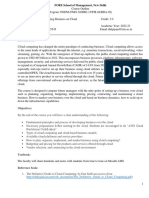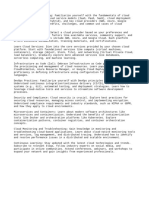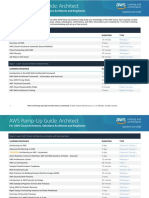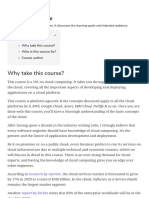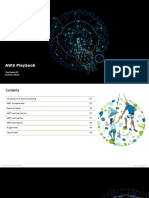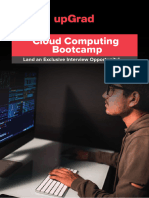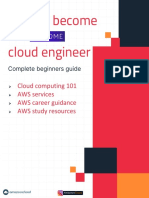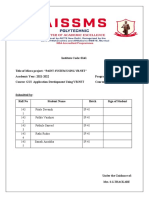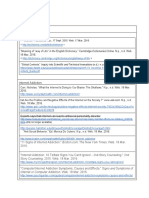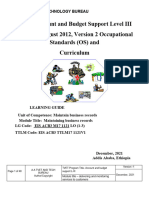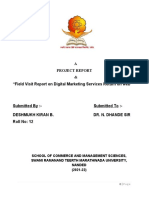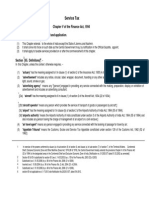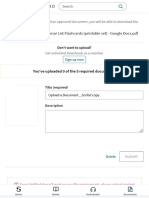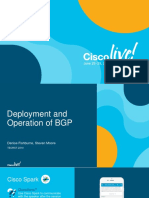Path to Learning Cloud Computing: A Practical Guide for Beginners
Overview:
Cloud computing is one of the most in-demand tech skills worldwide, offering high-paying jobs, flexibility,
and opportunities in remote and international markets. This guide provides a structured and practical
learning path to become proficient in cloud computing, assuming 1–2 hours of study per day.
Stage 1: Understand the Fundamentals (2–3 Weeks)
Goal: Learn what cloud computing is, why it matters, and the basic models and services.
Topics: - What is Cloud Computing? - IaaS, PaaS, SaaS models - Public vs Private vs Hybrid Cloud - Intro to
major providers: AWS, Azure, Google Cloud
Resources: - YouTube: Simplilearn, TechWorld with Nana - Course: [Cloud Computing Basics (Coursera -
University of Illinois)] - Read: AWS Cloud Practitioner Essentials (free on AWS)
Output: - 1-page summary of cloud models - Diagrams explaining cloud architecture
Stage 2: Choose a Cloud Provider and Learn the Basics (4–6 Weeks)
Goal: Get hands-on with a cloud platform (Start with AWS or Azure)
Topics: - Setting up a cloud account (Free Tier) - Virtual Machines (EC2 in AWS / VMs in Azure) - Storage (S3 /
Blob) - IAM & Permissions - Networking basics
Resources: - AWS: [AWS Certified Cloud Practitioner course (freeCodeCamp)] - Azure: [Microsoft Learn -
Azure Fundamentals] - Labs: Qwiklabs (for AWS), Microsoft Learn Sandbox (for Azure)
Output: - Deploy a virtual machine - Set up cloud storage and upload a file - Create a basic permission
policy
Stage 3: Learn Core Services for Cloud Engineers (6–8 Weeks)
Goal: Gain working knowledge of key services used in cloud-based systems.
Topics: - Databases (RDS, DynamoDB, CosmosDB) - Serverless (AWS Lambda / Azure Functions) - Auto-
scaling and Load Balancing - Monitoring and Logging - Cloud CLI and SDKs (AWS CLI / Azure CLI)
Resources: - AWS: [AWS Developer Tools Workshop] - Project-based YouTube tutorials - Documentation
walkthroughs
1
�Output: - Deploy a serverless function - Connect a database to a web app - Set up auto-scaling for an
application
Stage 4: Get Certified (Optional but Recommended)
Goal: Validate your skills with a beginner-level certification
Certifications: - AWS Certified Cloud Practitioner - Microsoft Azure Fundamentals (AZ-900) - Google Cloud
Digital Leader
Resources: - Tutorials Dojo Practice Tests - Whizlabs or Udemy prep courses
Output: - Certification badge (adds credibility to your resume and LinkedIn)
Stage 5: Build Real-World Projects (4–6 Weeks)
Goal: Gain experience and build a portfolio
Project Ideas: - Host a portfolio website on AWS S3 with a custom domain - Deploy a full-stack app with EC2
+ RDS + S3 - Serverless URL shortener with Lambda and DynamoDB - Real-time dashboard using GCP and
Firebase
Output: - GitHub repo with documentation - Live demo link - Blog posts explaining your projects
Stage 6: Job Readiness and Soft Skills (Ongoing)
Goal: Prepare to apply for internships, freelance gigs, or junior cloud roles
Focus Areas: - Resume writing for cloud roles - LinkedIn optimization - Networking in cloud communities
(Reddit, Discord, LinkedIn) - Mock interviews
Soft Skills: - Communication and collaboration - Documentation - Learning mindset
Bonus: Expand Your Knowledge
Advanced Topics: - DevOps & CI/CD - Kubernetes - Cloud Security - Infrastructure as Code (Terraform)
Final Tips: - Learn by doing—prioritize hands-on practice - Stick with one cloud provider initially - Document
your journey on GitHub or a blog - Stay updated—cloud tech evolves rapidly
2
�Recommended Timeframe: 4–6 months (1–2 hrs/day)
Outcome: - Solid foundation in cloud computing - Portfolio with real projects - Ready to apply for
internships or junior roles remotely














